4 Crazy Babe Ruth Stories Prove the Bambino is MLB’s GOAT | Tie Breaker
Mlb
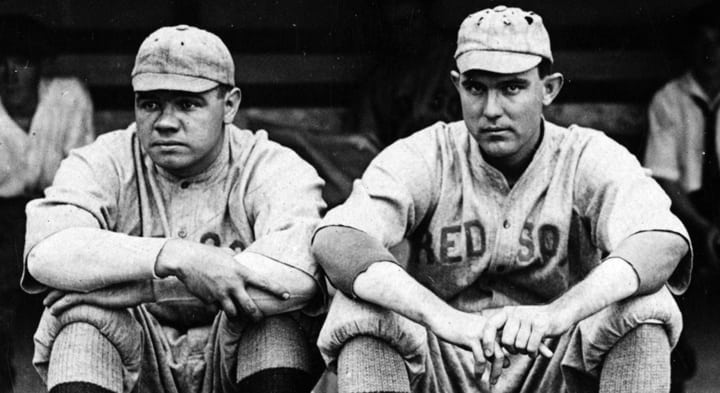
“Sharing” Perfection
It doesn’t take a diehard sports fan or baseball aficionado to be familiar with the legendary Babe Ruth. The Bambino’s time in the MLB spotlight didn’t stop when his career came to a close in the 1930s, as his popularity has transcended the sport to the point that he’s still the biggest name in baseball.
There are number of iconic moments associated with the Sultan of Swat that everyone knows like calling his shot with his home run point or the Curse of the Bambino when the Red Sox traded him to the New York Yankees.
But such an enigmatic figure left far more memories than the ones everyone knows. Let’s take a look at some of the most ridiculous moments of the Babe’s wildly eccentric life.
Completing a no-hitter is one of the greatest feats a pitcher can ever accomplish. The only thing better than that is to pitch a perfect game.
Go figure, Babe Ruth’s legendary life had a taste of this excitement too.
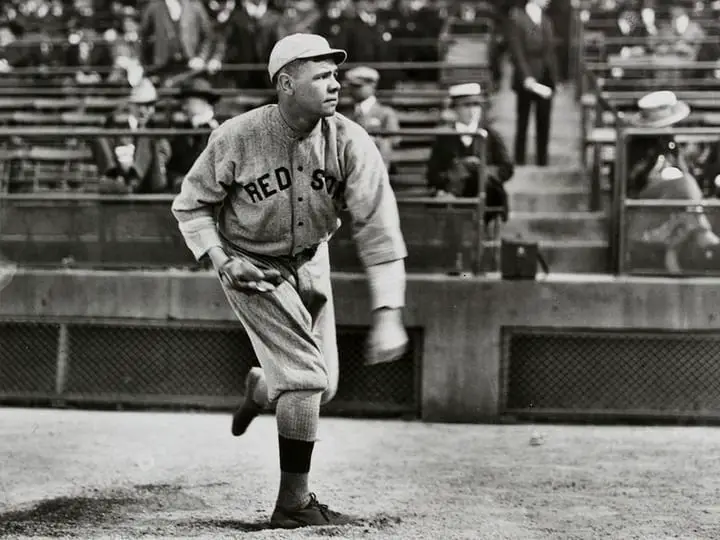
Smithsonian Magazine
In 1917, Ruth’s fourth year with the Boston Red Sox, a ridiculous game at Fenway Park against the Washington Senators added to the Babe’s legacy.
Before the Great Bambino was known for being a slugger, he made a name for himself on the mound.
Even though the Sultan of Swat hadn’t shown his prowess at the plate yet, he did deliver a big hit there.
The other member of the Red Sox who truly made this story such an incredible tale is pitcher
Ernie Shore.

NoNoHitters.com
Turn back the clocks to the summer Boston Saturday in 1917 when Ruth took the mound as the starting pitcher.
Leading off for the Senators was Ray Morgan. It didn’t go well.
Long story short, Ruth walked Morgan, but that was far from the end of it.
Ruth was NOT having any of what home plate umpire Brick Owens was calling.
While there are slightly differing accounts of exactly what was said, the descriptions essentially paint the same picture of Ruth ripping into the ump (with varying degrees of vitriol).
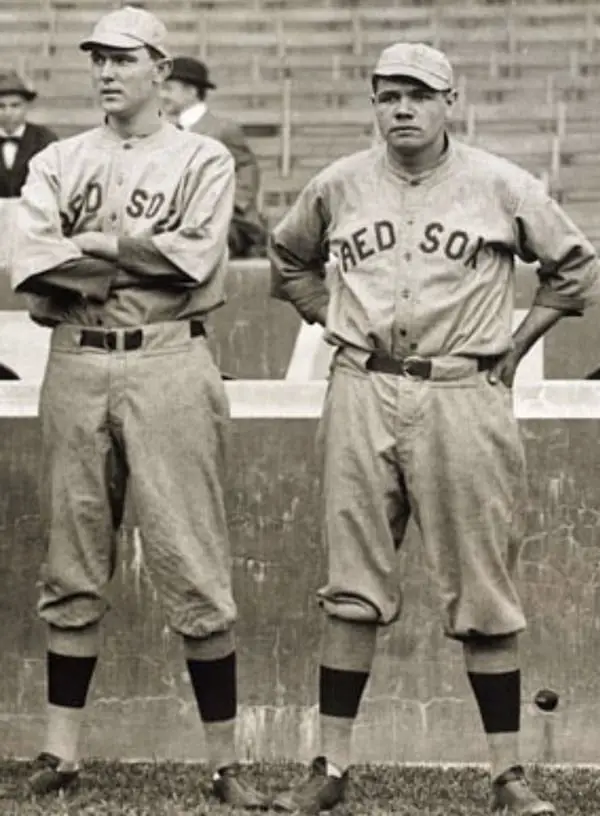
Heretic, Rebel, a Thing to Flout
Ruth dug into the ump, incensed at some of the pitches called balls, eventually getting himself thrown out.
The back-and-forth between the two proved to be filled with foreshadowing, as the ump said if Ruth keeps talking, he’d get thrown out, and Ruth said if he gets thrown out, he’ll be throwing hands.
When Ruth got tossed, he showed the ump that getting punched was not an empty threat, it was a promise, as he rushed home plate.
Some descriptions paint a picture of Ruth wildly swinging both hands while other depictions describe it as a shot to the jaw or even behind the ear.
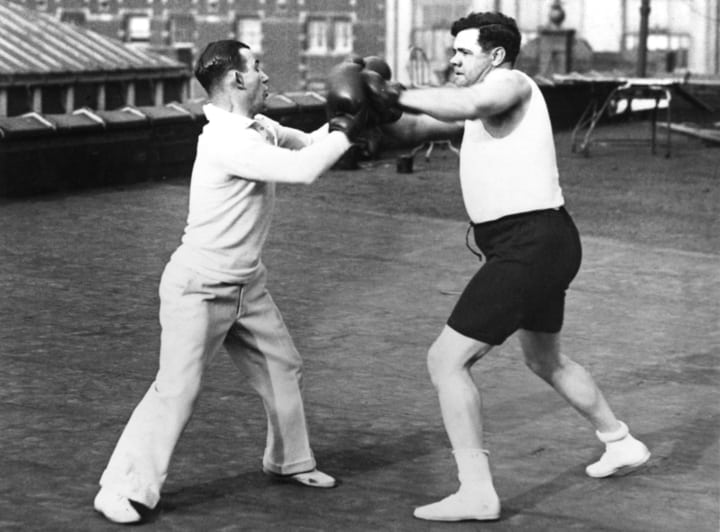
Hulton Archive / Getty Images
Boston catcher Pinch Thomas tried staying between Ruth and the ump until a group finally pulled the Bambino away (accounts differ again, some sources claiming it was police intervention while others just the team intervened).
[os-widget path=”/jeffgo/sultan-of-swat”]
So, after an eventful day that showed a grand total of one batter faced and walked (and a knock to the noggin off the books), the Babe’s big day was over.
In came Ernie Shore, who had already proved himself a more than capable pitcher, as he’d helped the Sox to two World Series titles in 1915 and 1916.
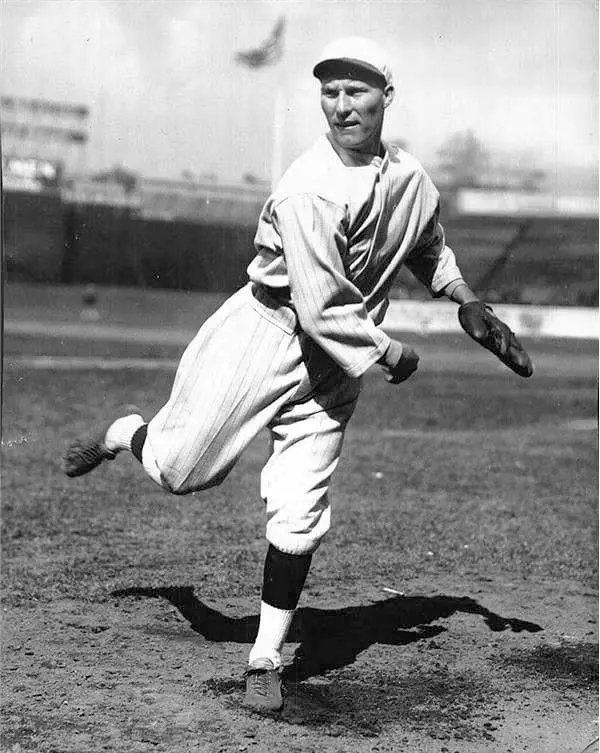
fenway park diaries
Shore was simply stunning. His time pitching was short. It was 27 up and 27 down, retiring every single batter to pull off one of the rarest feats in all of baseball – the perfect game.
Except, it actually wasn’t.
Since the only batter Ruth faced was walked, Shore’s flawless outing was knocked down a peg and only able to be registered in the books as a no-hitter. That is absolutely devastating, but it isn’t even the worst part.
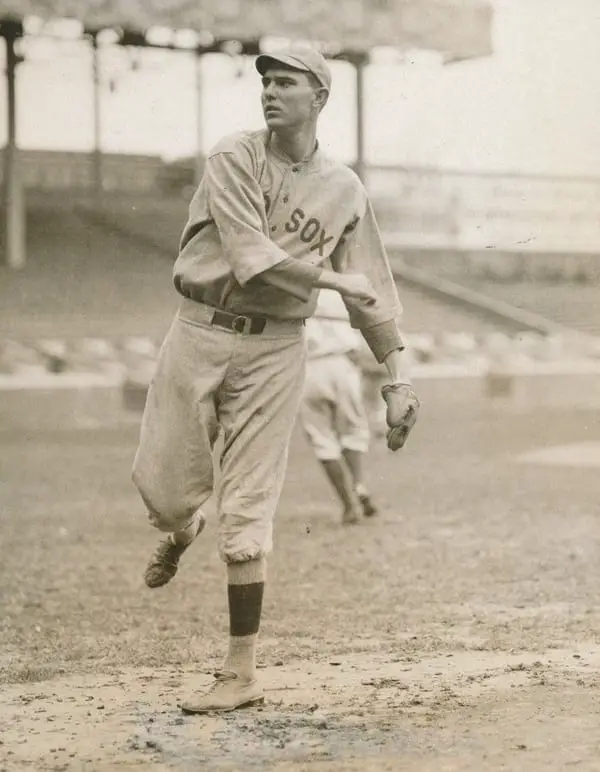
Pinterest
Not only did Ruth’s walk botch the Shore’s perfect day, he was credited as sharing the no-hitter with his poor teammate who literally did all the heavy lifting.
To add insult to injury, Ruth’s celebrity had already reached incredible heights, making the once-in-a-lifetime game by Shore little more than a footnote to the theatrics of the Babe’s ejection.
Superhuman Health
One of the most spectacular feats of Babe Ruth’s baseball career was the fact that he endured as long of a professional career as he did.
We often hear how “that player really needs to retire,” or “they’re past their prime.”
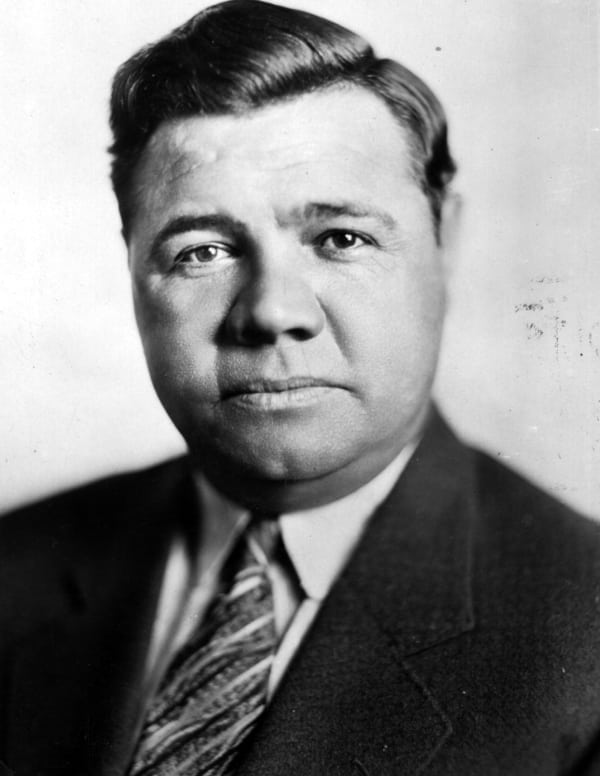
Keystone / Getty Images
While the final year of the Babe’s career was certainly not the prettiest of sights, the fact that he played for 22 seasons until he was 40 years old is a marvel.
Ruth was a notorious cigar smoker, who indulged his proclivity to party, all of which likely led to (or exacerbated) esophageal cancer and an early death in 1948.
It really is remarkable Ruth was able to play at such a high level with his lifestyle, only to pass away 13 years after concluding his MLB career, at age 53. But when looking back on the Babe’s history of run-ins with health scares, it becomes clear that his disregard for safety is part of what made him so fascinating.
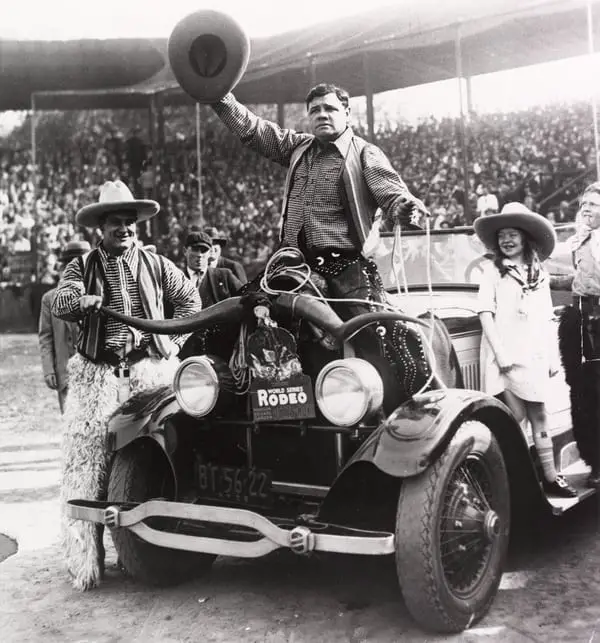
Baseball Hall of Fame
By no means was the Bambino impervious to injury, but his ability to push through the pain or rebound is simply stunning.
Ruth lived life in the fast lane with an eccentric night life, as well as in a literal sense when behind the wheel, which got him in trouble on more than one occasion.
The Babe seemed to think getting ticketed was part of the driving experience, as his reckless approach to driving constantly left him with speeding tickets and even landed him in jail once.
It also resulted in NUMEROUS accidents.
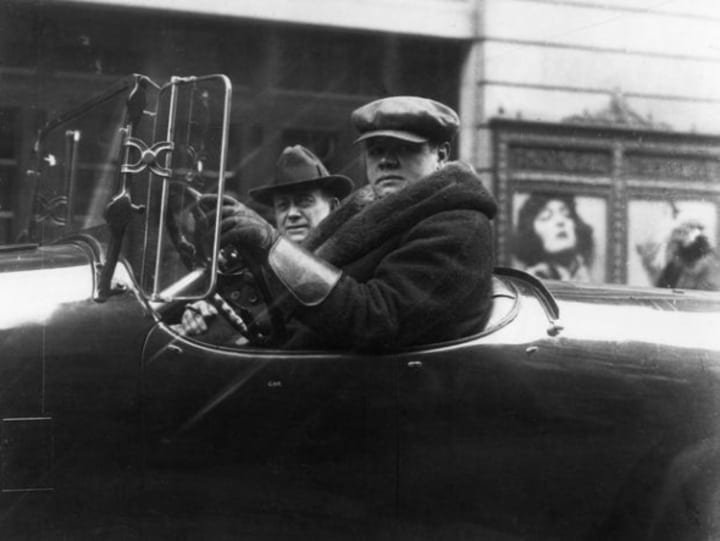
archivedinnings.com
Rather than having some life-changing experience, Ruth just got himself a new whip and went back to his wicked fast ways.
Having already wrecked a car back in Boston, it was little more than an afterthought in July 1920, as Ruth ripped around rural Pennsylvania with his first wife, some friends and a coach during a road trip for the Yankees.
Ruth cut a sharp bend too fast, flipping the car and ejecting his wife and coach from the car. Somehow, everyone managed to walk away scot-free.
The only thing Ruth suffered was a knee injury, but that proved to be par for the course that season. A slew of injuries (including an infected wasp sting that needed to be “lanced”) forced him to miss a whopping 12 games.
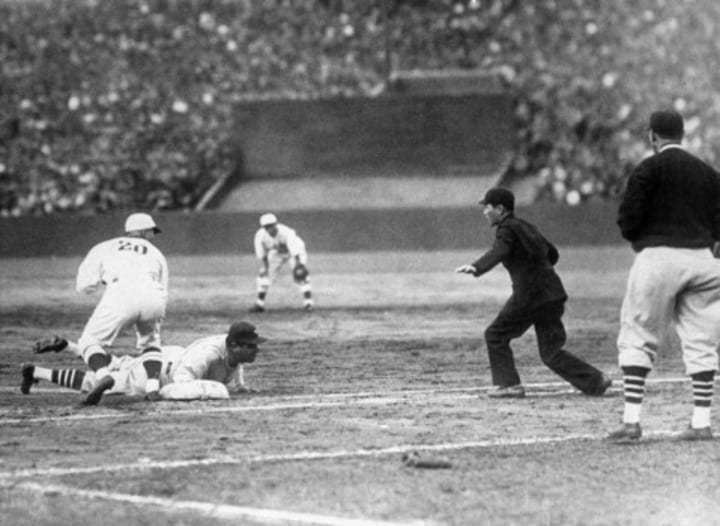
Orange County Register
The following year, in his first World Series appearance with the Yankees, it was once again Ruth who proved to be the only one who could do himself in.
In Game 2, after being walked a third straight time, Ruth looked to get some real action by stealing second base. He went ahead and stole third too, but scraped his arm on the slide.
Of course, this seemingly innocuous move resulted in an infection. In Game 3, the infection developed an abscess that was so painful he actually needed to be taken out of the game by the eighth inning. The abscess needed to be lanced. Yuck and ouch.
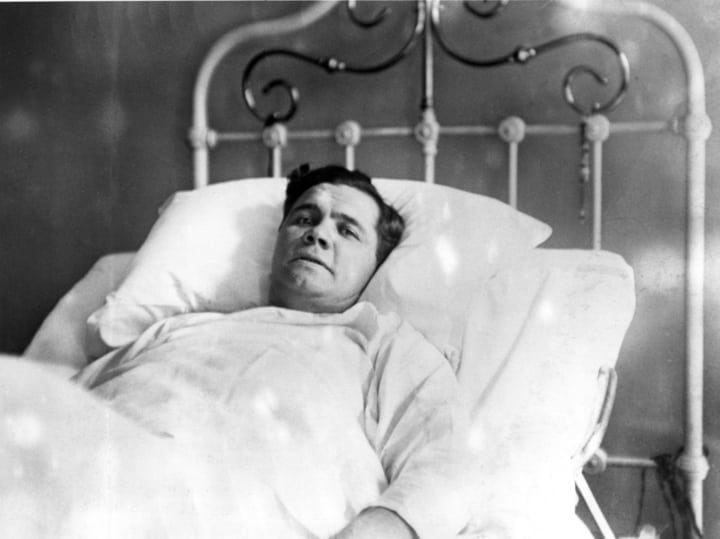
Hulton Archive / Getty Images
The Bambino headed into the next game with a drainage tube and taped-up wrist only to end up with the game-winning bunt. What he got for his heroics was the news that he’d need another cut to drain the abscess further (again, ew) and, to his dismay, Ruth was forced to sit out the remainder of the series, as the Yanks fell to the Giants.
The 1924 season marked another classic moment in the unfathomable feats of the Bambino.
Even the manliest of men in baseball today couldn’t pull off something like what the Babe did, because the progress in medical … everything has undergone worlds of improvement.
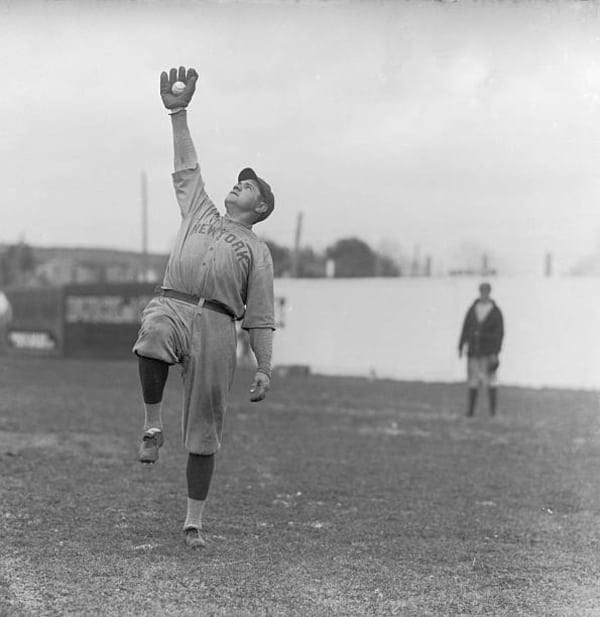
Getty Images
On the road in D.C. in the first game of a July doubleheader against the Washington Senators, Ruth gave the stadium a serious scare.
In the fourth inning, Ruth chased down a fly ball in right field that was falling just over into foul territory.
With his eyes to the sky, the Bambino was oblivious to the rapidly approaching concrete wall until he smashed into it, knocking himself unconscious.
It’s also interesting to note that, unlike today, the foul line goes directly into the side bleachers rather than the warning track fields have today. (See picture above.)
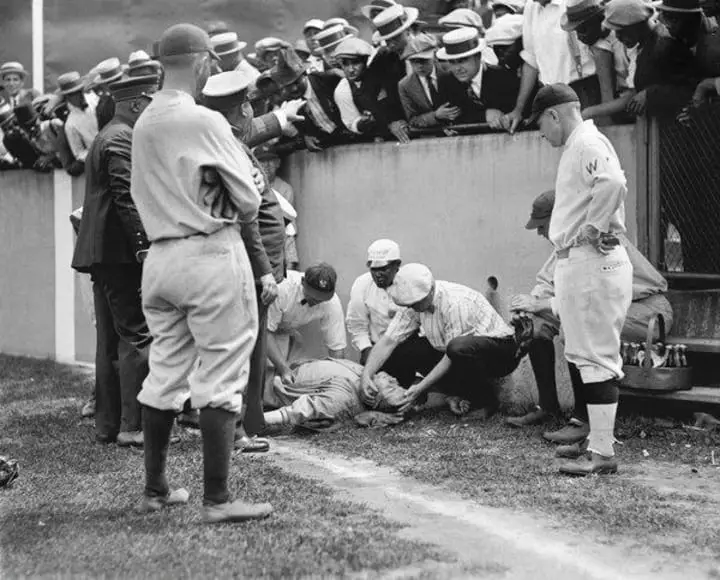
The New York Times
Ruth never saw the wall (and probably didn’t remember the run-in either), flying into it so fast that he was knocked out for FIVE minutes!
Talk about terrifying.
Even after the big scare, when the Babe finally rose to his feet, he refused to be taken out of the game.
Like a true legend, the limping Ruth stepped up to the plate and collected another two hits in that game. As if it couldn’t get any more ridiculous, the undoubtedly concussed slugger even stayed out on the field to play the second game of the doubleheader.
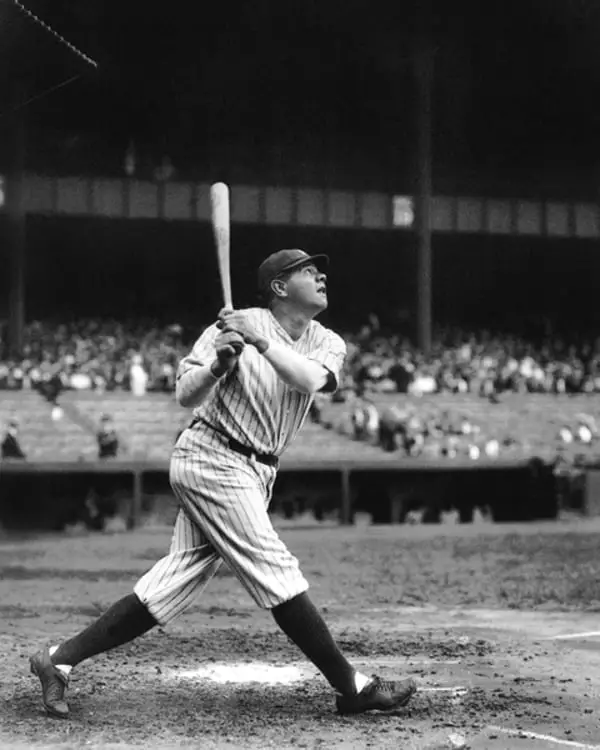
Simon Synek – Typepad
It really is quite impressive that time and again it seems that the biggest danger to the Babe’s health was Ruth himself. Dangerous as his lifestyle may have been, his intrepid attitude to live every day with little to no regard was exactly the thing that made him a once-in-a-lifetime athlete and person.
Charity with a Criminal Acquaintance
This one’s definitely way up there for oddities highlighting Babe Ruth’s strange and eccentric life.
An exhibition golf match for charity may not sound like much of a headline, but the background of this story is as bizarre as the experience itself.
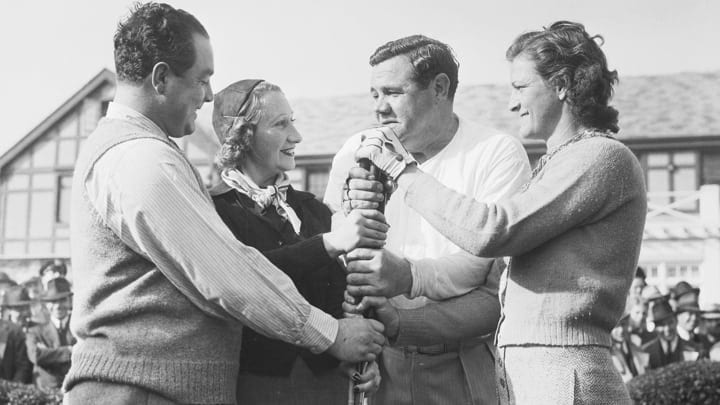
Golf Channel
The charity golf event was made up of two tandems, one male and female per team. Pitted against Ruth was another name that has been lost to time, but in 1937 when the event was held, was one of the biggest figures in pop culture.
Introducing the famous (infamous) John Montague.
Even surrounded by many of the most famous celebrities in the world living in Hollywood, there was a certain gravity about Montague that was simply irresistible to those around him. Everything about him was shrouded in mystery, and that just made his persona all the more intoxicating.
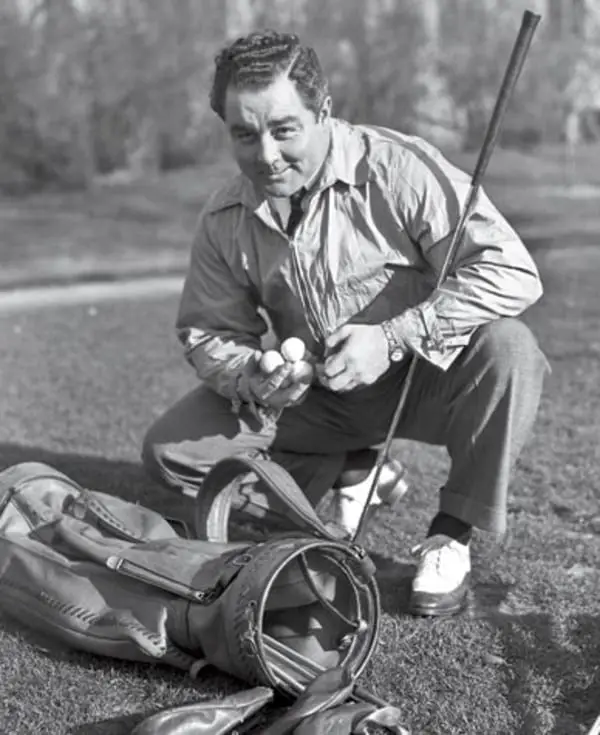
forgottennewsmakers.com
At some point in the early 1930s, Montague’s celebrity ascent on the golf course was rapid, and it came out of nowhere, literally. It was like this guy fell out of the sky and onto the links of the Los Angeles golfing scene.
Wherever Montague traveled around Southern California, unbelievable stories – he reportedly won a bet against Bing Crosby by winning a hole with a baseball bat, rake and shovel as his clubs – of his golfing exploits followed suit, earning this unknown phenom the title “Mysterious Montague.”
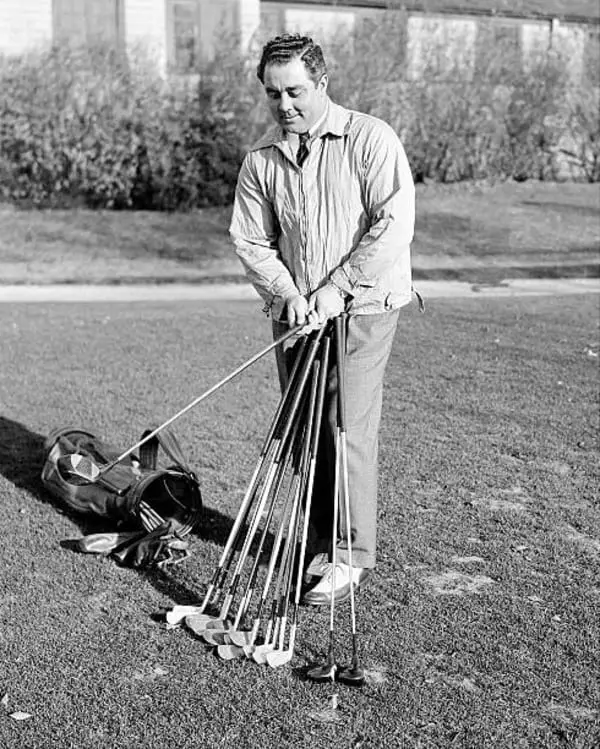
Getty Images
When famed sports journalist Grantland Rice got to play with him in 1935, he was so blown away that he wrote a detailed article on him. Prior to this, Montague had been so private that he always avoided having his picture taken, let alone enter a tournament.
It turns out that was for good reason.
The mystery surrounding such a gifted and popular athlete who so adamantly avoided any spotlight was suddenly thrust into it.
The Mysterious Montague’s new notoriety, along with published pictures of him, helped connect the dots for police on the other side of the country.
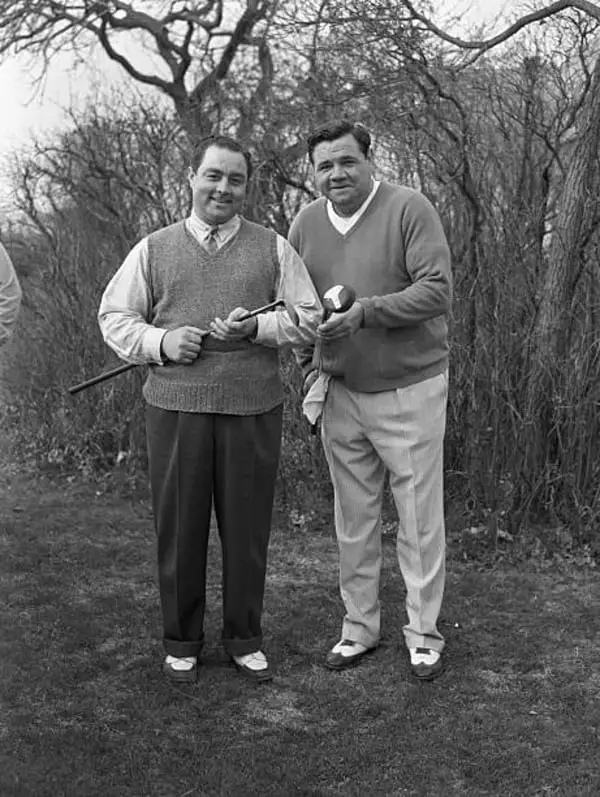
Getty Images
Montague was actually Laverne Moore of Syracuse, NY, a former Minor League baseball player. He was a bootlegger who had disappeared years ago as a wanted man for his role in an armed robbery.
Arrested in July, Montague’s court hearing came in October. Even though it seemed that there should have been more than enough to put Montague away, conflicting witness statements resulted in an acquittal.
With no more need to hide in the shadows, a 34-year-old Montague returned to golf in the biggest way he could.
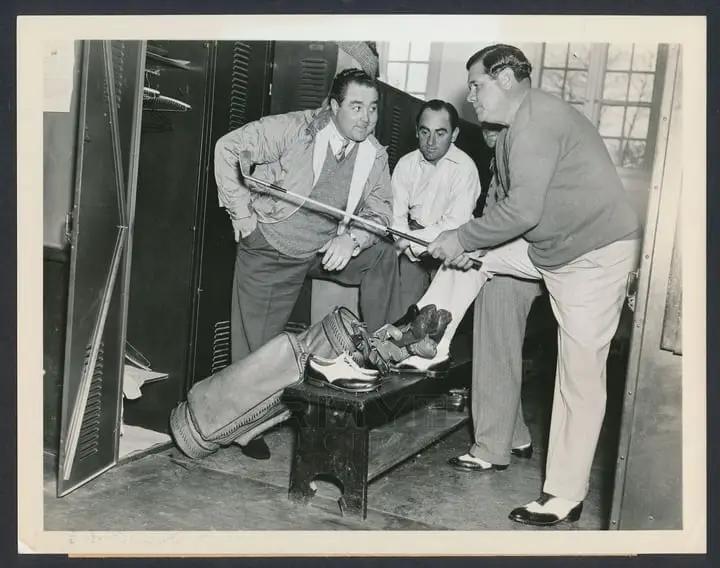
RMY Auctions
In November 1937, Montague joined up for the celebrity charity golf event with the recently retired Babe Ruth, superstar athlete Babe Didrikson and local amateur Sylvia Annenberg at Long Island’s Fresh Meadow Country Course.
The two Babes alone was enough to entice a giant crowd, but Montague’s legendary status in Los Angeles, mixed with his criminal history, had turned him into a superstar, making this a must-see event.
The round of golf sold for a buck a pop, and some 10,000 spectators were in attendance.
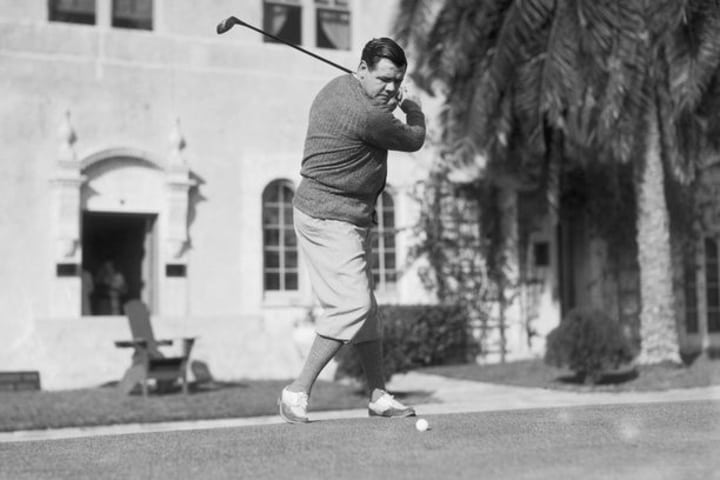
Getty Images FOTO
A promising day played out disastrously. There was such an overwhelming number of people in attendance that the spectators were practically standing on top of the foursome.
It seems that the mere headline of the Babes facing the Mysterious Montague and his up-and-coming amateur partner was the most fun part of the entire round, because, well, they really couldn’t even manage to get a full round in.
There were simply far too many people for police and security to hold back after every shot. There were problems right from the get-go. On the first hole alone, Montague had to wait 15 minutes to get his second shot off.
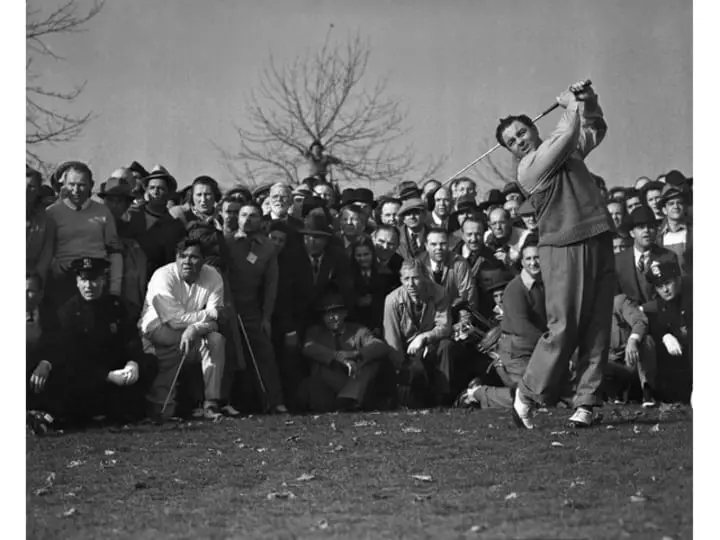
Crowds came swarming around each athlete between every shot. The entire gimmick looked like just that, a silly gimmick that was horribly run.
As one reporter bluntly, yet tellingly put it, “Sixy percent of those present didn’t know a bunker from a bung-hole.”
By the ninth hole, the round was going so disastrously that the foursome was ready to pack up and get out of there.
Actually, they weren’t just “ready” to get up and leave. When the Babes and the Montague crew made it to the ninth green, they’d had enough.
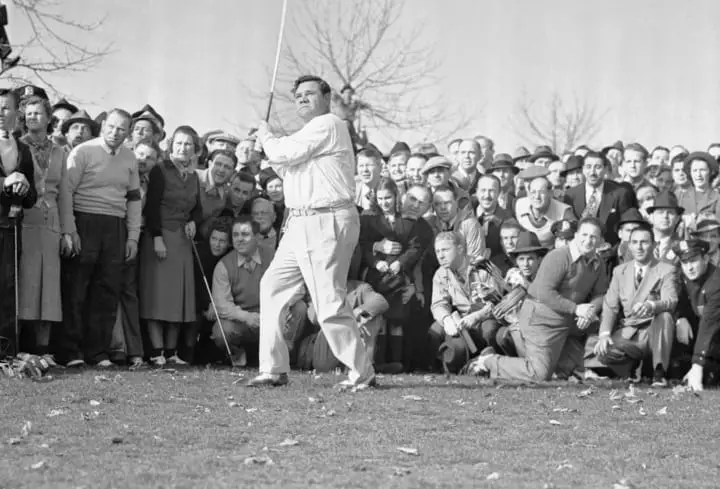
Every shot was like pulling teeth with excruciating waits, pushing the crowd back to get a shot in, so they just picked up their balls and called it a day.
A truly bizarre end to what may still be one of the strangest public (half) rounds of golf to date.
Bad Boy Baby Ruth
A very common rumor that has posthumously become an integral piece of Babe Ruth’s life story is that he was raised an orphan.
As it turns out, that piece of the Babe’s past isn’t quite right, though there is a kernel of truth to it regarding his beginnings.
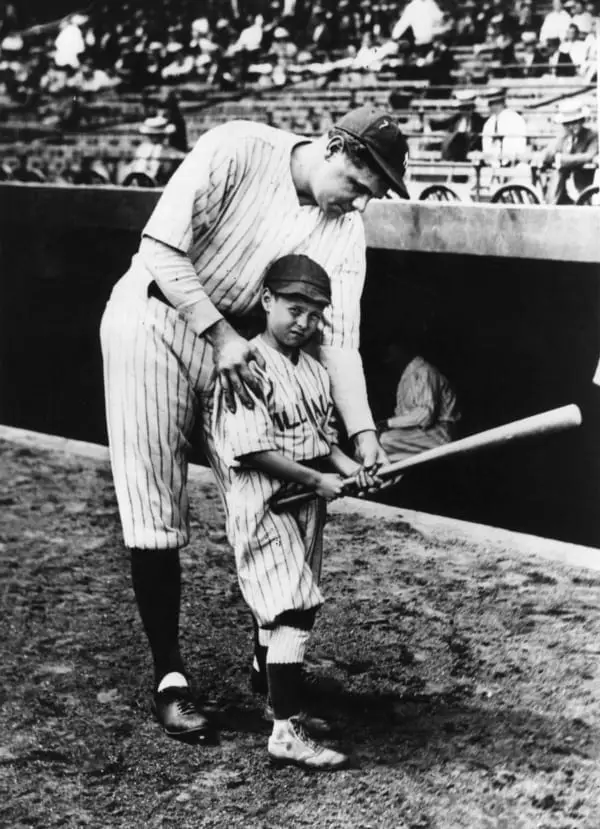
Ruth was born in Pigtown, a section of Baltimore, to parents George and Katherine. They really had their work cut out for them keeping their little boy in line.
Growing up, Ruth was a nuisance to everyone around and had troublemaker in his DNA.
He was a menace, plain and simple.
His father bounced around various jobs before eventually getting a number of saloons with the family actually living upstairs above one of the locations. In adulthood, Ruth recalled stealing drinks from his father when he was still just a little boy.
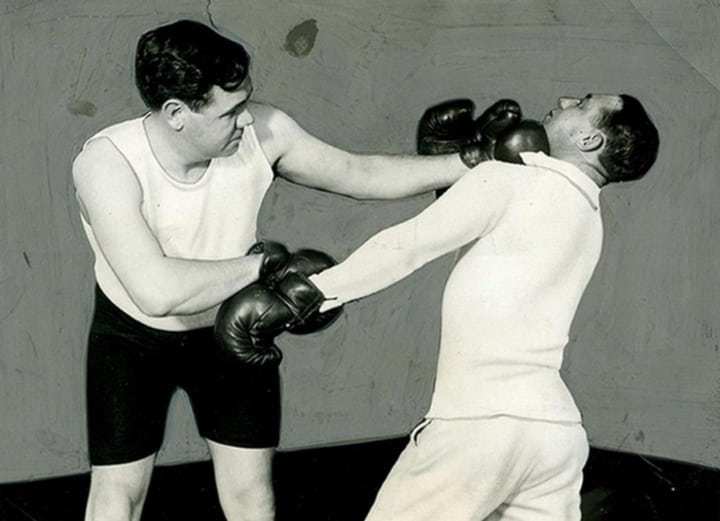
Fightland – Vice
It’s a safe bet that his surroundings were exactly conducive to be raised in a positive environment, which can be highlighted by the death of his father in 1918 after getting in a fight with his brother-in-law and fracturing his skull.
It should be noted that the violent incident was not a one-off moment, rather something that actually may have been a part of the reason Ruth did not stay with his family throughout his childhood, though it also fell heavily on his own actions.
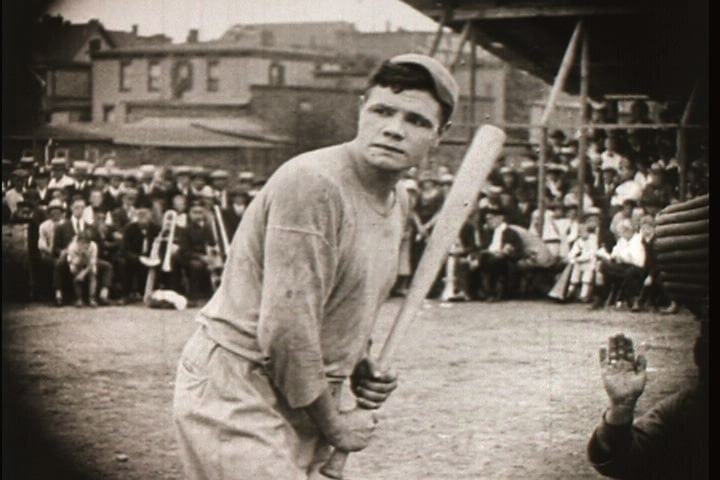
By seven years old, along with drinking booze, Ruth was already chewing tobacco and chronically skipping out on school.
Ruth recalled in his autobiography, “Looking back on my boyhood, I honestly don’t remember being aware of the difference between right and wrong.”
Though some accounts claim that it was due to a violent incident at the saloon his father ran, it’s widely believed that Ruth’s delinquent behavior forced his parents to ship him off to boarding school.
Incredibly, that was likely the greatest thing that ever happened to him.
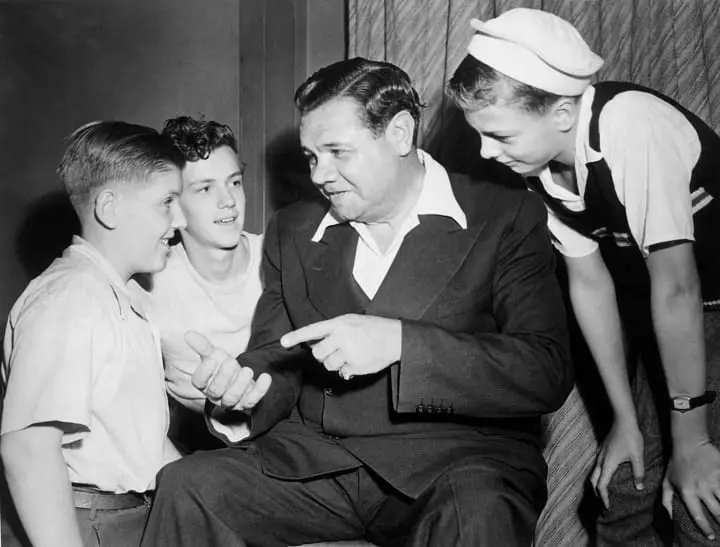
Sports Illustrated
At seven years old, Ruth was sent to St. Mary’s Industrial School for Orphans (thus the common mix-up).
At the reformatory orphanage, Ruth’s reputation followed, as documents noted him to be “incorrigible” through a large portion of his 12-year stay.
Despite apparently being more than a little rough around the edges, Ruth did pick up a lot during his time there. He learned various skills, developing into an apt shirt-maker and capable carpenter and all by the age of 12!
Still, that wasn’t the most important thing he got out of his “reform years.”
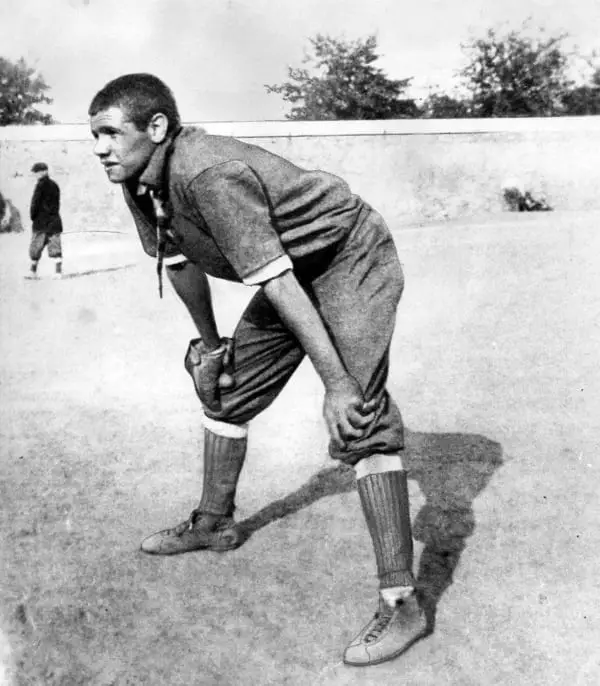
Pinterest
It was here that the Babe’s love for baseball blossomed into something much more. Games and tournaments between different dormitories earned Ruth quite the reputation.
Brother Matthias of the Xaverian Brothers who ran the school was a major influence on Ruth.
Despite constantly getting in trouble, Ruth grew close to Brother Matthias, especially over the game of baseball.
He was an excellent mentor to Ruth on and off the field, and was as influential in helping shape Ruth’s batting stance and swing as he was in making him a lifelong Catholic.
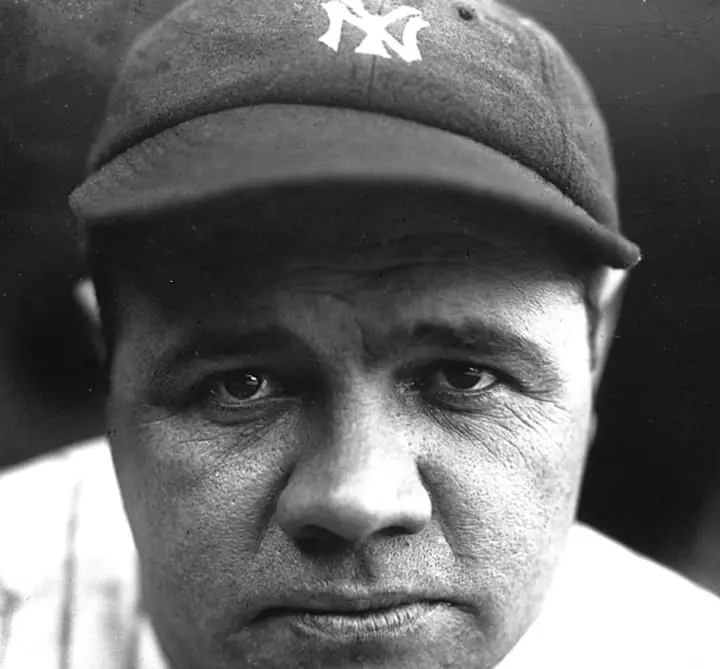
si.com
Most important of all, however, was that it was here where his talents grew to such a level that Jack Dunn, who owned and managed a Minor League affiliate of the Baltimore Orioles, came to see Ruth play.
He was so impressed that he signed the young talent to a professional contract … and even ended up being the man responsible for donning Ruth was the nickname we all know him by, “Babe.”
Sources: SABR, HowStuffWorks, Bleacher Report, Golf Channel, Smithsonian, New York Times